As long as you watch the war from afar, the situation is clear. In the Donbass region, Ukraine is defending Europe’s freedom and protecting itself from being seized by the Russian state and its pro-Russian supporters. The separatists argue that they are fighting against a supposedly fascist threat by the government in Kyiv. Ukraine has become a bone of contention between the East and the West, worn down by the dispute over geopolitical orientation and the question of how much freedom and sovereignty is conceded to a former Soviet Republic at the western border of Russia. This is the place where current frictions between Russia, the EU and the U.S. originated.
The closer you get, however, the more confusing the situation gets. In Ukraine political resistance to change is gradually getting the upper hand. The country is in danger of abandoning its reform agenda. The political elite is increasingly criticised for putting themselves first rather than keeping the promises of the “Revolution of Dignity” of the winter of 2013/2014. In the eastern Ukrainian Donbass region, the war is entering its fifth year.
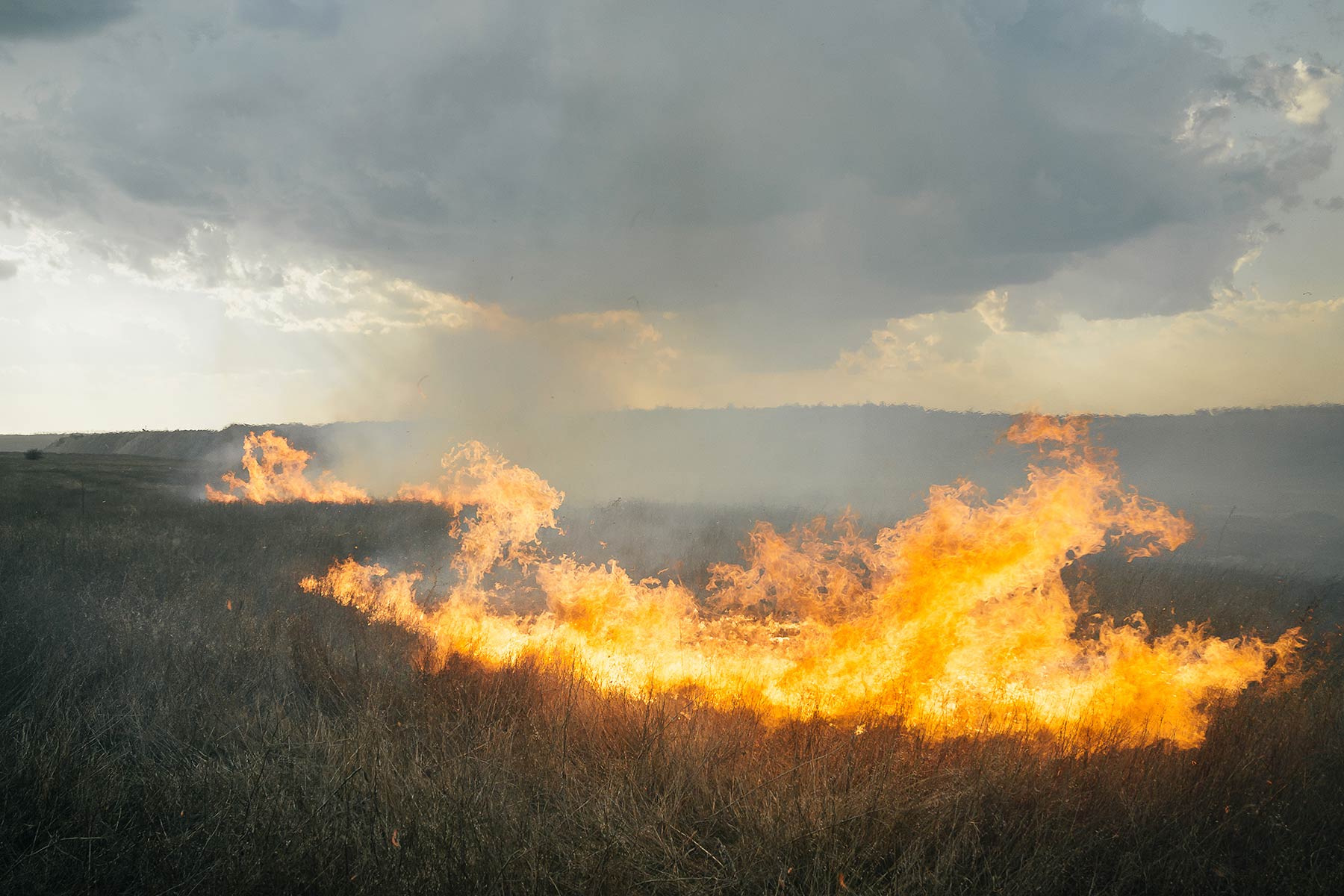
Photo: © Florian Rainer
After an initial wave of patriotism, the devoted commitment of volunteers supporting the army and providing for internally displaced persons, people are now exhausted and war-weary – in particular in the conflict area. Many here have never been thrilled about the army’s presence; rather than anticipating victory, they feel powerless and indifferent. Most inhabitants of Donbass would probably neither agree with Kyiv’s claim that heroes are fighting against occupiers and invaders, nor with the Kremlin’s version that the Ukrainian people are being drained by a civil war supported by the United States. Officially, heroes, liberators and protectors fight against terrorists, occupiers and fascists, with traitors and collaborators in between. However, the terms both sides are operating with have often become hollow words. This book is about the Donbass region, where very few believe that there is something worth fighting or even dying for.
Grey Zone: A Journey Between the Front Lines in Donbass
The photographer Florian Rainer and journalist Jutta Sommerbauer document the stories of people from the war zone in their book Grauzone: Eine Reise zwischen den Fronten im Donbass [Grey Zone: A Journey Between the Front Lines in Donbass]. They have focused their research on the issues of personal positions in this conflict, the protection of individuality and future perspectives. Grauzone explores the new realities created by the militarised border. Everyday life is determined by improvisation, standstill and uncertainty, fear and melancholy, as well as people’s resilience and flickers of hope, mostly fuelled by the little things of everyday life.
They don’t want this war; indeed, they are not even sure who is fighting against whom. Only one thing is certain: Komu-to eto wygodno. Someone is benefitting from this war. Who that is remains unsaid and often left to imagination. It is a blank that can be filled with different terms at will: the powerful, the influential, Petro Poroshenko, who is still president, the local bandits, or the oligarchs. The list is long and variable, reflecting a profound distrust of those in power, which is incessantly fuelled by the war.
The war in Donbass is an example of static warfare. There haven’t been any big battles for some time, and military progress is mostly limited to a few metres on both sides. Whether it is a field, a hamlet, or a hill: either side defiantly celebrates whatever can be wrested from the opponent. Shortly after the Minsk agreement was signed in February 2015, the front line came to a halt. On maps it is a line drawn across the Donetsk and Luhansk regions, straight in some areas while in others it zigzags like the blade of a saw. The battle line runs from the sandy shores of the Sea of Azov to the north, crossing vast agricultural areas. Forming a semicircle, it surrounds the Donetsk metropolitan area and later follows the course of the Siverskyi Donets River to the east until reaching the Russian border.
It cuts through villages, keeps people away from their work places in the combines and makes it impossible for them to cultivate their fields. Stretching some 450 kilometres, the line separates the government-controlled areas from the so-called ORDLO – the separate districts of Donetsk and Luhansk regions, a neutral technical term to denote the self-proclaimed Donetsk and Luhansk People’s Republics (abbreviated in the book as DNR and LNR) and their Moscow-backed governors. An estimated three and a half million people live in the separatist areas, which constitute about a third of the original Donetsk and Luhansk regions.
Currently, it would be politically risky for both sides to significantly move the demarcation line: this could only be achieved by military force, entailing a great deal of bloodshed. Yet things have not really calmed down, despite the ceasefire agreement and continual talks in Minsk, which regularly bring together Ukrainians, Russians and the separatist leaders of Luhansk and Donetsk. Day after day OSCE observers record serious breaches of the ceasefire that only exists on paper. Firearms, artillery and missiles are used regularly; the death toll passed the 10,000 mark long ago. 1.8 million people are registered as internally displaced persons in Ukraine.
Someone is benefitting from this war. Who that is remains unsaid and often left to imagination.
While there is a plan on the table to solve the conflict, there is no political will to implement it: Ukraine’s willingness to compromise is limited, since the Minsk agreement was reached at a moment of military pressure. The longer the country is trapped in limbo between no-war and no-freedom, the more resentment about the document grows. To Moscow, on the other hand, the war is a vehicle to hinder Ukraine’s political and economic progress. The Kremlin has little interest in fully settling the conflict. And the separatists? They are the least willing to make concessions; after all, they literally fear for their lives.
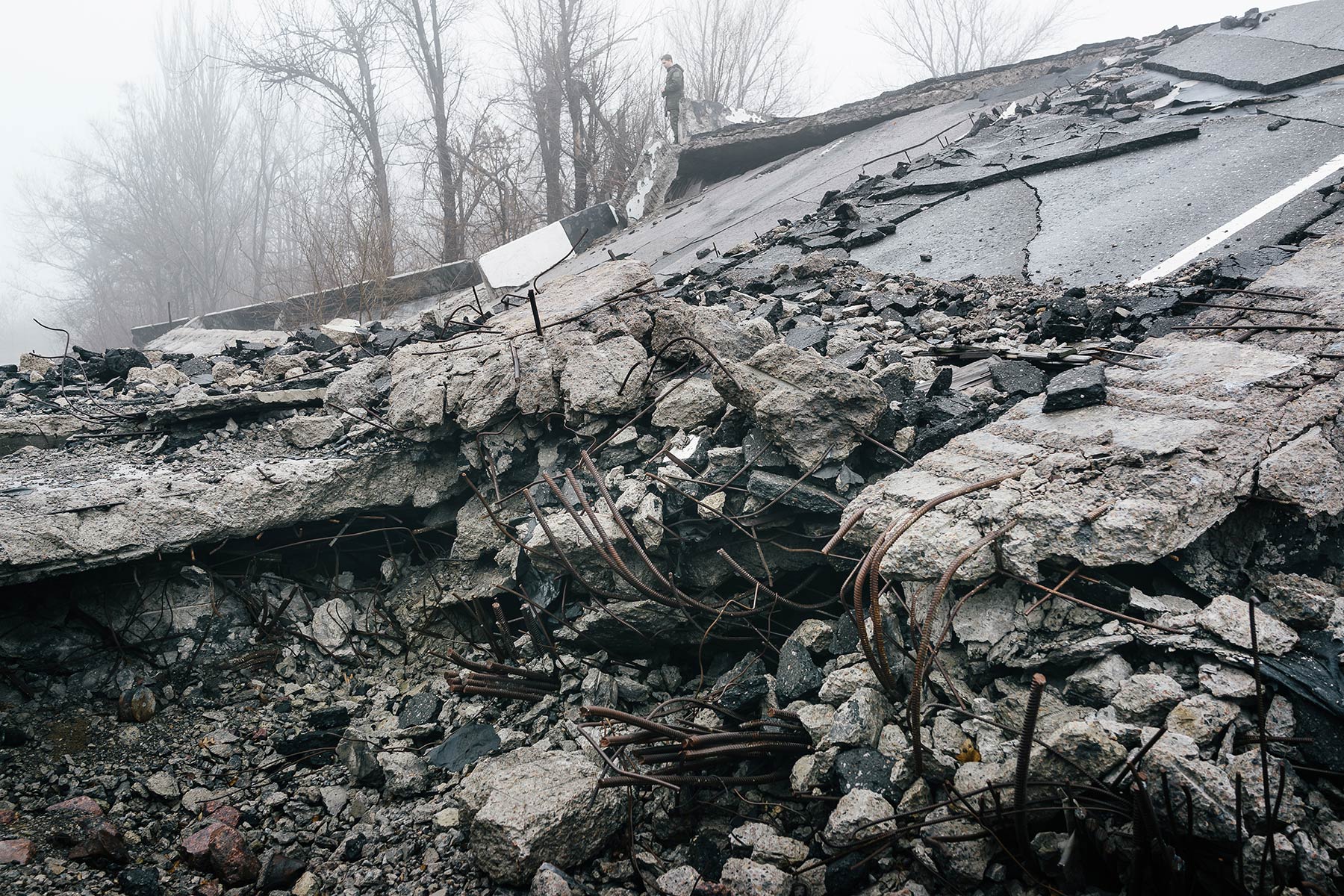
Photo: © Florian Rainer
Conflicts develop a momentum of their own
If enthusiasm for the war has ebbed, why do they keep firing? What happens in Donbass is true for many hotspots: after some time, conflicts develop a momentum of their own. It is easier to continue to fight than to end them, even if there is not much to gain. The arms suppliers profit from them, soldiers and combatants get their pay, businessmen make money out of smuggling, taxi drivers benefit from people travelling between the front lines and hotel owners rent out cheap beds to pensioners who must travel to the other side to collect their pensions or go shopping.
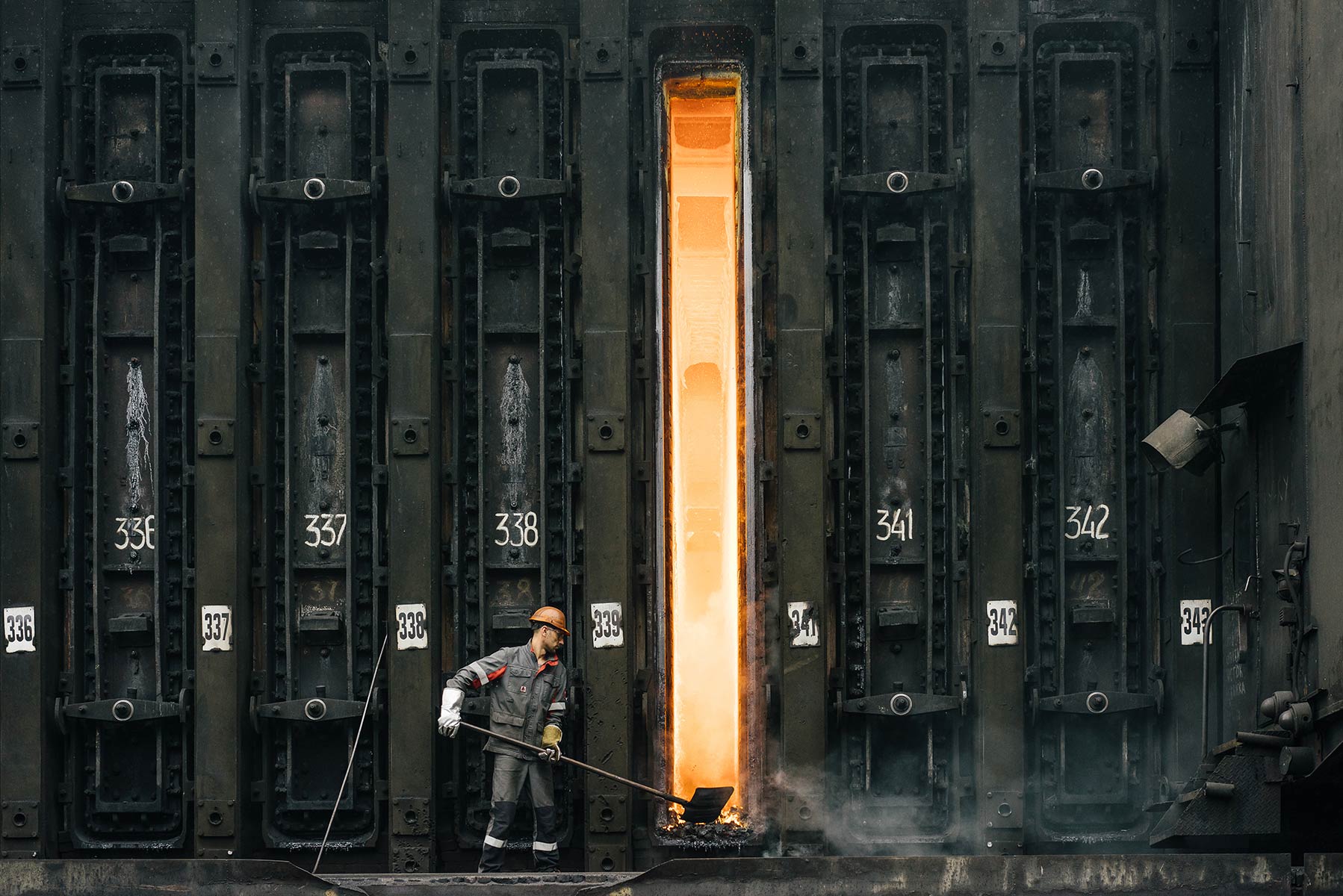
Photo: © Florian Rainer
The separatist areas’ dependence on Russia is growing. Moscow fills the gap left by Ukraine, thus building loyalty among the population: by providing humanitarian aid, recognizing university degrees, number plates and birth certificates. Many people are left no other choice given the desperate economic situation and declining living standards. What is more, the local government rules with an iron fist, relies on hostile rhetoric and evokes the constant threat from the outside.
Experts use yet another word when talking about the front: contact line. However, it is more a dividing line. It separates neighbours and families, rather than opposing groups.
The Ukrainian-controlled side also takes contradictory positions: on the one hand, local authorities in government-controlled Donbass seek to reach out to citizens and overhaul infrastructure; they support civil society initiatives. “Ukraine, this is us!” they say. On the other hand, Kyiv has taken steps to deepen the divide of the conflict region: the economic blockade, which has been in force since early 2017, bureaucratic obstacles and inhumane conditions at the checkpoints have unsettled many people. Finally, the idea of giving full responsibility for the well-being of Ukraine’s citizens to the aggressor, i.e. the Russian Federation, is finding growing support among politicians. If that happened, aspirations such as a political solution, reconciliation and territorial reintegration would move even further beyond reach than they are today.
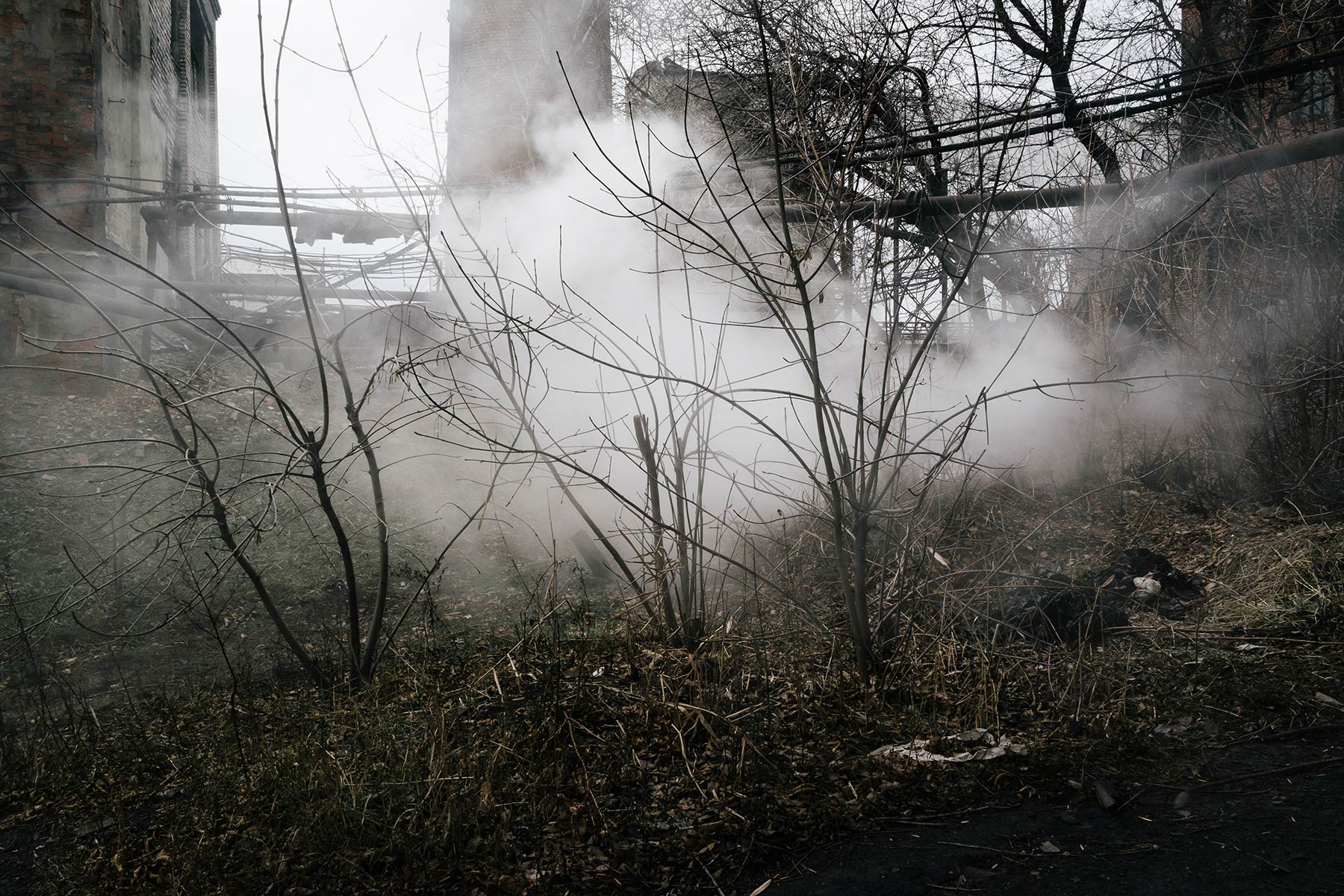
Photo: © Florian Rainer
The conflict is a constant in daily life, like the bullets that local residents almost seem to be waiting for on the few occasions when they fail to appear. To many, the Donbass region is a lawless zone, a black hole or white spot. Above all, it is, however, a temporary solution that people are forced to come to terms with and that must last for an unknown period of time – a fragile limbo, stable instability.
The area between the deadlocked positions is called “grey zone” in war jargon: the people in the narrow and wider conflict area live in a proverbial grey area, not knowing what tomorrow will bring or which direction their life will take.
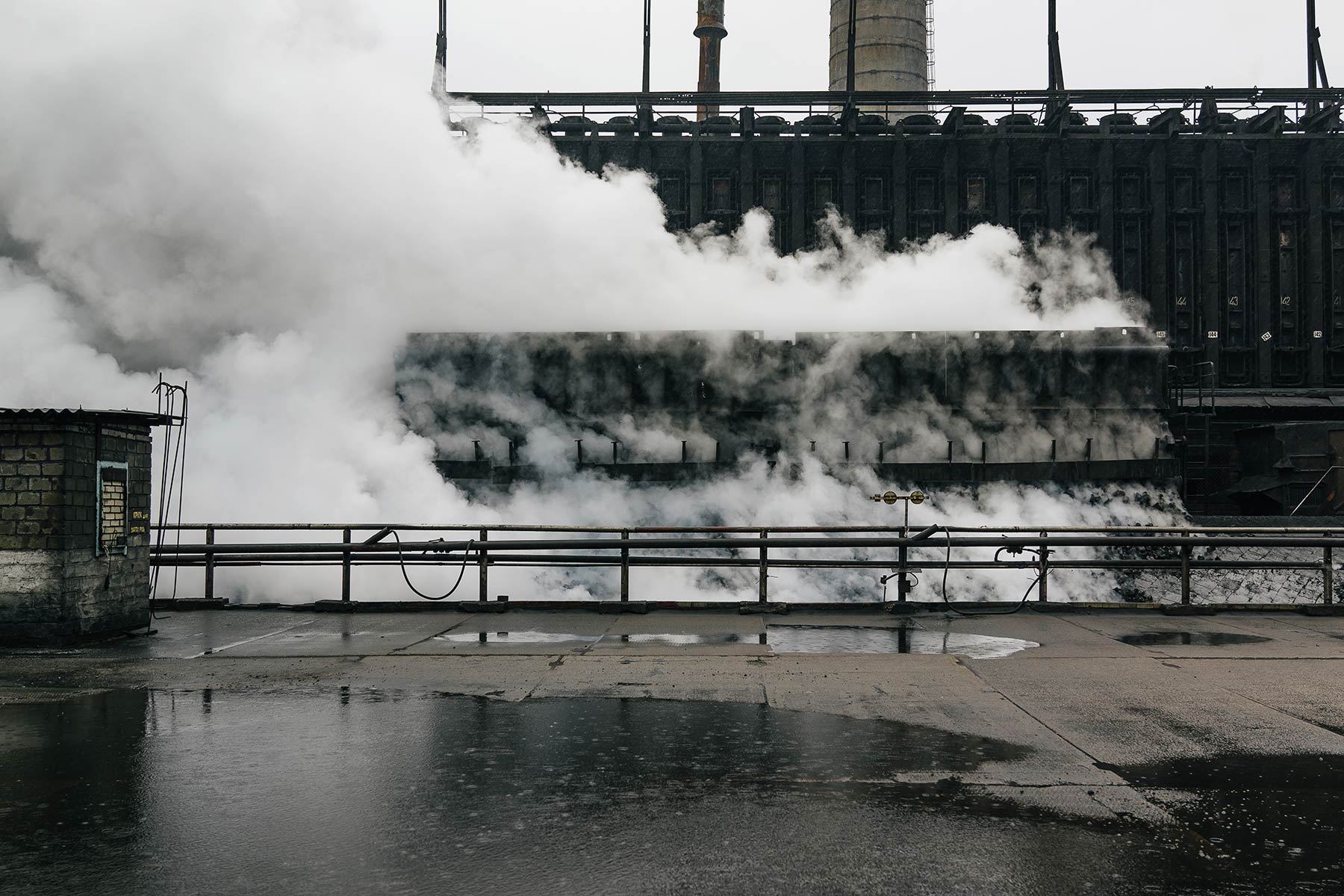
Photo: © Florian Rainer
Little is known about the reality of life of those occupying the grey zone; few people care about their suffering. Their voices and experiences are seldom heard at international conferences. However, hundreds of thousands live and work along the front line. The area between the opposing military posts is most affected by the hostilities: the asphalt is contaminated with mines, water pipes and power lines are repeatedly patched up, the gas supply is cut. Municipal offices are vacant, and schools and kindergartens are often closed. Only a few stay here – often the weakest who have no other options; and those who, both daring and weary of life, are simply not willing to yield. Amid all these adversities, people go about their daily routines (albeit to a limited degree). Children attend school, women get their nails done, farmers cultivate the fields, couples fall in and out of love, pensioners cross the checkpoints and ring their relatives on the other side of the front.
During our travels in spring and autumn 2017 we traced the lives of the inhabitants of the grey zone. Our route took us along the battle line, where these experiences condense into a front line existence – and dissolve at the same time. Travelling to both sides, we discovered that the separate worlds are similar in many ways. We made a deliberate choice not to link the protagonists to the conflict parties: at times the connection is obvious, at times irrelevant. A map shows the geographical location of the scenes.
Of course, you cannot drive along a front line, but you can get close to it. That’s what we did, mostly with the help of courageous drivers and local guides. We did not always reach our destination. Despite prior permission, we were denied access to some villages; on other occasions, we were only allowed a short visit, accompanied by the army and militia. We were denied accreditation to the Luhansk separatist area without justification. Therefore, our book unfortunately makes no reference to the cities and villages of this region.
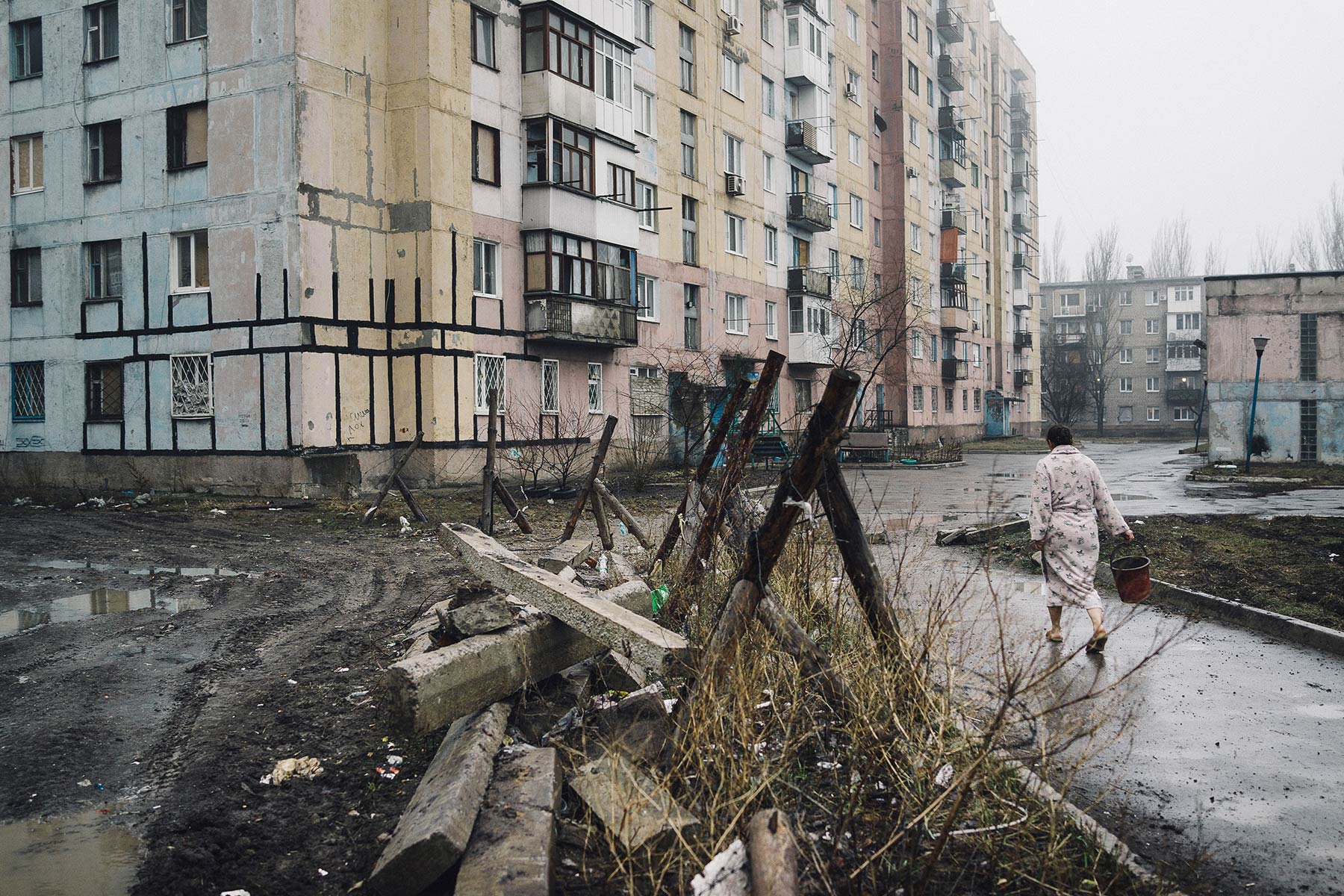
Photo: © Florian Rainer
We met many people on our travels who cannot imagine a peaceful coexistence in a unified Ukraine – or at least not for now. The persistent violence prevents them from seeing peaceful alternatives. There is no doubt that light must be shed on crimes committed during the war and perpetrators must be held accountable. It is also clear that these are very difficult tasks during an ongoing war. Apart from this, Ukrainian society is also faced with the question of the complex consequences the conflict has for the community, how people will want to live on both sides of the front line in the future, what separates them and what they have in common. For a start, it is necessary to listen to the individual stories and to take note of them – even if we may not agree with all aspects and possibly find them disturbing, or if they contradict established (heroic) tales.
During our visits to the grey zone we collected stories that tell of willpower and hopelessness, of the feeling of being left to one’s own devices, of not wanting to give up, and of a life that wants to be more than mere survival. We have documented people’s fates and want to share them through texts and images. If big terms cease to be effective, human experience becomes the new, old starting point.
Original in German. Excerpt from the book Grauzone: Eine Reise zwischen den Fronten im Donbass [Grey Zone: A Journey Between the Front Lines in Donbass], published in April 2018 at bahoe books, Vienna. The research trips were made possible by funding from the Crossing Borders programme of the Robert Bosch Stiftung.
Translated into English by Barbara Maya.
This text is protected by copyright: © bahoe books / Florian Rainer, Jutta Sommerbauer. Imprint with courtesy of the publisher. If you are interested in republication, please contact the editorial team.
Copyright information on pictures, graphics and videos are noted directly at the illustrations. Cover picture: © bahoe books / Florian Rainer.